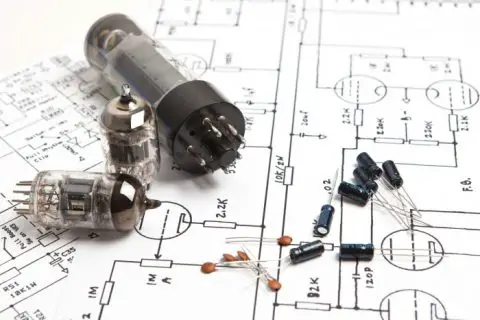Tube amps require a good deal of maintenance and basic upkeep in order to continue functioning as intended. Any true hobbyist will commit to a regular maintenance schedule to make sure that they can enjoy their tube amp far into the future. If you’re reading this article, you probably fit into this category.
A tube amp isn’t something you can just leave in the corner to accumulate dust in between the occasions on which you want to use it. In order to make sure your tube amp is in great shape and ready to function when you want to use it, you need to be doing two things: Using it regularly and staying on top of basic upkeep and care.
In this guide, we’ll walk through the to-do list that you should be following to keep your tube amp in perfect working order and prevent maintenance-related issues in the future. While it may seem like a lot of effort goes into just maintaining your tube amp, won’t it all be worth it when you get to turn it on and enjoy its pristine sound
Just about everyone who has invested in a tube amp will say a fast “Yes!” to that question. After all, no transistor amp can compare to the tone and sound quality a well-maintained tube amp is able to produce. So, how do you keep your amp up-and-running at its best? These habits will help you with your amp’s crucial up-keep and maintenance.
#1 Keep Your Amp In A Stable Environment
Do you find yourself moving your tube amp a lot? Do you keep your tube amp in an area where it’s subject to drastic changes in temperature? If so, your amp may be suffering.
It’s best to keep your fragile tube amp inside in a stable environment where it won’t be exposed to significant changes in temperature or humidity. When your amp does need to be transported or is being moved from one area to another (like indoors to out, or vice versa), be sure that you give your amp time to adjust.
Without the ability to gradually adjust, while off, to the new environment, your tube amp is likely to suffer from premature failure of its components due to differential expansion, induced by the changing temperatures and other external factors.
So, you might want to think twice about keeping your amp in that poorly insulated spare room where the heater is only turned on when you come in.
#2 Let It Warm Up
Speaking about sensitivity to temperatures, it’s very important that you give your amp some time to warmup when you go to use it. You should first turn “Standby” move ON and then allow your amp to warm up. Always put your amp in standby mode before flicking the main power switch.
After this brief warmup period, flick standby to OFF while you allow the preamp and power tubes to warmup for about half a minute, and then you can begin putting your tube amp to good use! Simply flicking on the power and instantly trying to put sound through it will shorten your amp’s life (no matter how cool it seems to sound when things “fade in” as the amp warms up).
Just taking this extra step to warm up your amp properly will greatly extend its working life.
#3 Don’t Use It As A Coaster
Maybe you couldn’t imagine setting an open drink on or around your precious tube amp, but far too many people do. The fact is, accidents do happen and you are simply asking for trouble. If something spills, the disaster could not only ruin your amp, if your amp is plugged in, it could take you down in the process! This might seem like a no-brainer to you, but it’s worth mentioning.
Always keep liquid of all kinds far away from your amp. Get a table and put it out of arm’s reach, and away from your tube amp to ensure that there is no way you could possibly even intentionally get the beverage from its rightful place into or onto your amp in any way, shape, or form.
Seriously: Electricity and liquids do not mix. Even if your amp is unplugged, a spill will lead to quick a big (and expensive) cleanup. Play it safe.
#4 Use Quality Cables
Is your amp crackling and popping like a bowl of cereal? Make sure that your cables are in good working order and that you are using a high-quality cable. You should also check your tube amp’s connections regularly and keep them nice and clean.
A short can reduce the working life of your tube amp, so go through your connections (inside and outside your amp) every few months and keep things sparkling clean. When a cable seems to be getting old, replace it.
#5 Plug Things Up Before Powering On
It’s likely someone may have told you before that you should never turn on your amp’s head without it plugged into a speaker cabinet. In general, you should never turn your amp on at all without having everything plugged up and ready to go.
While failing to plug into your speaker cabinet before powering on can and likely will result in damage, plugging in other connections after powering on can present some impedance that can damage your amp too, even if on a smaller scale.
Try to get in the habit of plugging everything together before things are running.
#6 Choose The Right Load
Loading and impedance are two very important aspects of your tube amp’s proper functioning. Always ensure that your cabinet matches your amplifier’s impedance and that you have plugged everything into the correct sockets. Miss-matching your loads can be very hard on your amp.
Match everything without exceptions.
#7 Keep Things Still
Your cabinet might have casters on the bottom, but that’s no excuse to be pushing your amp around while it’s on. You should try to keep everything still and stable while things are running. The filaments and parts inside a tube are physically more weak when they are hot, so if you have to move your amp, do it before powering on and after it has the chance to cool off.
You should also allow your amp to cool off before loading out. When the tubes are cold, you’re less likely to do damage to your amp.
If your amp experiences a shock of any kind, it can also lead to immediate failure. If you’ve dropped or bumped your amp and things have suddenly went quiet, it’s time to take it to the repair shop!
#8 Turn It Right Off
There is no reason to go into standby mode when you turn your tube amp off, just shut off the main power. After it is cooled down, flip the standby switch back into the “ON” position and then it will be ready for the warmup process next time you go to use it. And, hopefully, that will be soon!
Check out the most popular high end tube amps.
#9 Don’t Let It Sit Around
Tube amps are very finicky, and if you leave it sitting around for a long time unused, you are bound to run into a problem next time you try to plug it in and use it. It’s ideal to be using your tube amp regularly.
If you do happen to put your tube amp into storage, be sure to get a can of electronic cleaner (compressed air) to blow off any debris and dust from your amp, both inside the jacks and inside the amp itself. Use a soft cloth to wipe down tubes and make sure to keep things looking shiny and like new.
The dust on tubes will hold in heat and excess heat will age your amp’s components. As you dust them, it’s also the perfect opportunity to check and be sure your tubes are all seated in their sockets firmly.
Remember, even when in storage, make sure your amp is in a controlled environment. Keep it away from dampness and humidity, like the kind found in your storage shed, garage, or even your car. These things will age your amp and they aren’t good for your speakers either. Humidity can lead to contact corrosion, surround rot, and make paper cones very brittle.
#10 Enjoy Your Amp!
At the end of the day, remember why you chose tubes even though they’re so fragile and time-consuming: their sound! When you’re putting in all this work to keep that sound at its best, don’t forget to plug in your amp and enjoy it regularly. Not only are you helping to extend its life by doing so, you’re also getting to enjoy the payoff for all your hard work.

